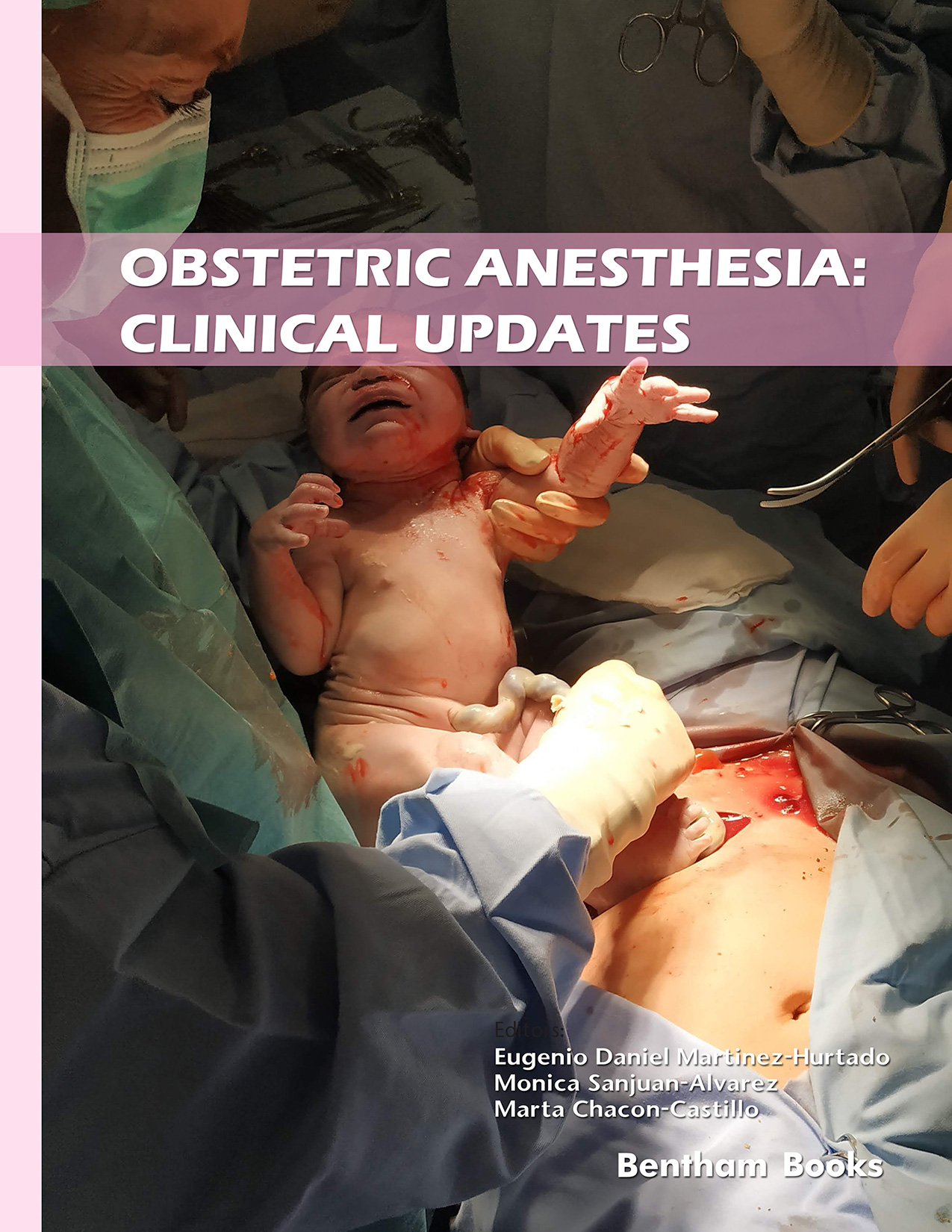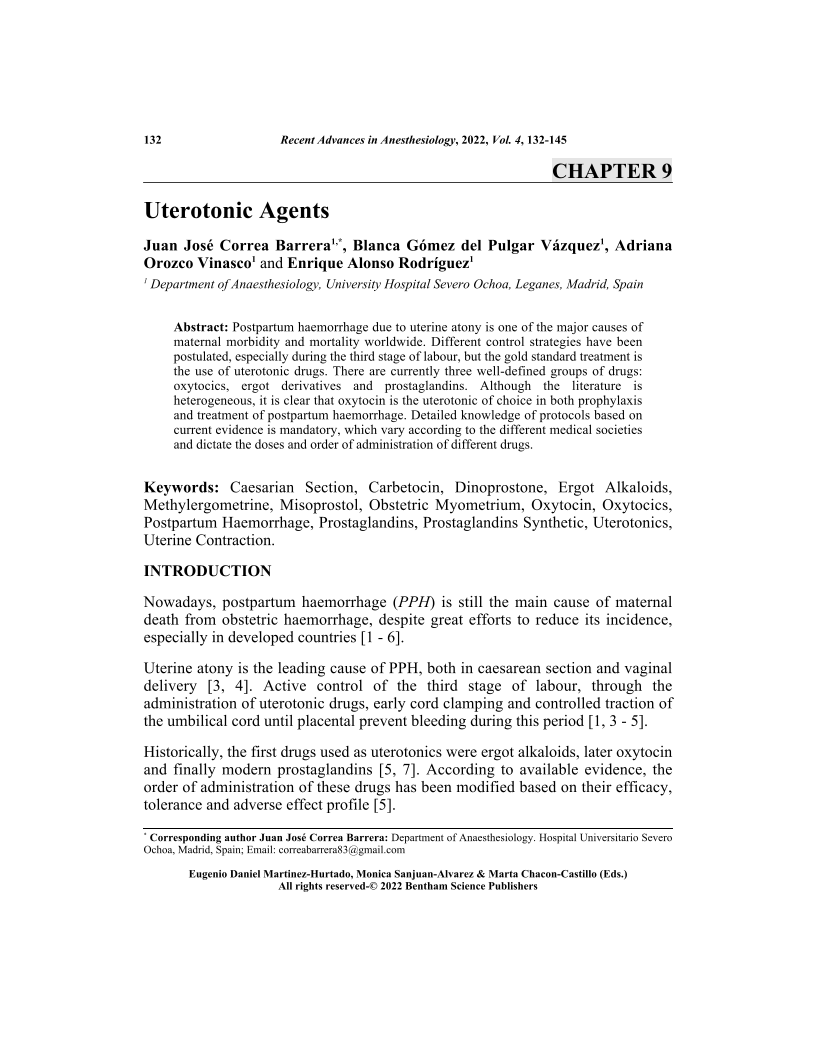Uterotonic Agents

- Authors: Juan José Correa Barrera1, Blanca Gómez del Pulgar Vázquez2, Adriana Orozco Vinasco3, Enrique Alonso Rodríguez4
-
View Affiliations Hide Affiliations1 Department of Anaesthesiology, University Hospital Severo Ochoa, Leganes, Madrid, Spain 2 Department of Anaesthesiology, University Hospital Severo Ochoa, Leganes, Madrid, Spain 3 Department of Anaesthesiology, University Hospital Severo Ochoa, Leganes, Madrid, Spain 4 Department of Anaesthesiology, University Hospital Severo Ochoa, Leganes, Madrid, Spain
- Source: Obstetric Anesthesia: Clinical Updates , pp 132-145
- Publication Date: November 2022
- Language: English
Uterotonic Agents, Page 1 of 1
< Previous page | Next page > /docserver/preview/fulltext/9789815051841/chap9-1.gif
Postpartum haemorrhage due to uterine atony is one of the major causes of maternal morbidity and mortality worldwide. Different control strategies have been postulated, especially during the third stage of labour, but the gold standard treatment is the use of uterotonic drugs. There are currently three well-defined groups of drugs: oxytocics, ergot derivatives and prostaglandins. Although the literature is heterogeneous, it is clear that oxytocin is the uterotonic of choice in both prophylaxis and treatment of postpartum haemorrhage. Detailed knowledge of protocols based on current evidence is mandatory, which vary according to the different medical societies and dictate the doses and order of administration of different drugs.
-
From This Site
/content/books/9789815051841.chap9dcterms_subject,pub_keyword-contentType:Journal -contentType:Figure -contentType:Table -contentType:SupplementaryData105

